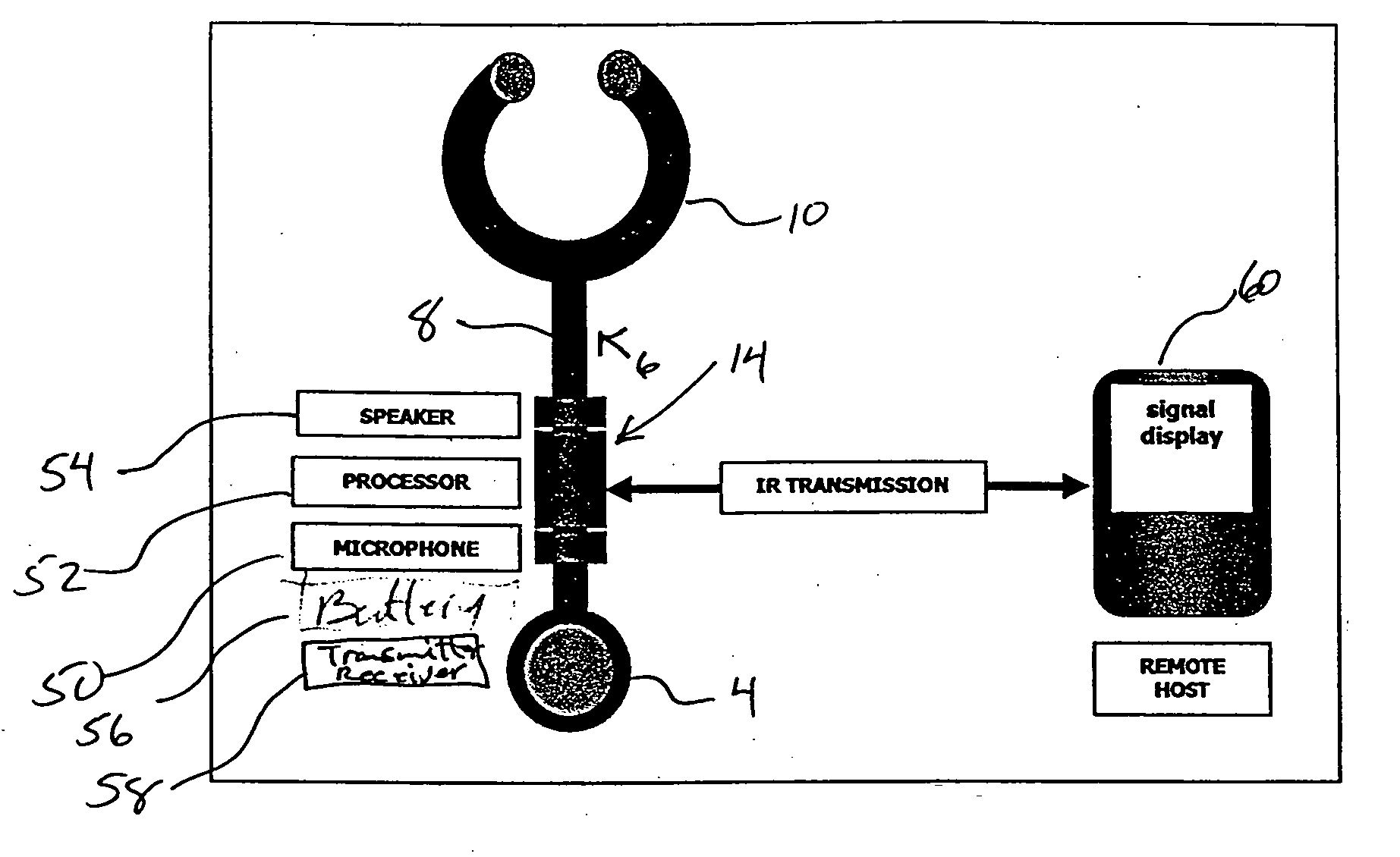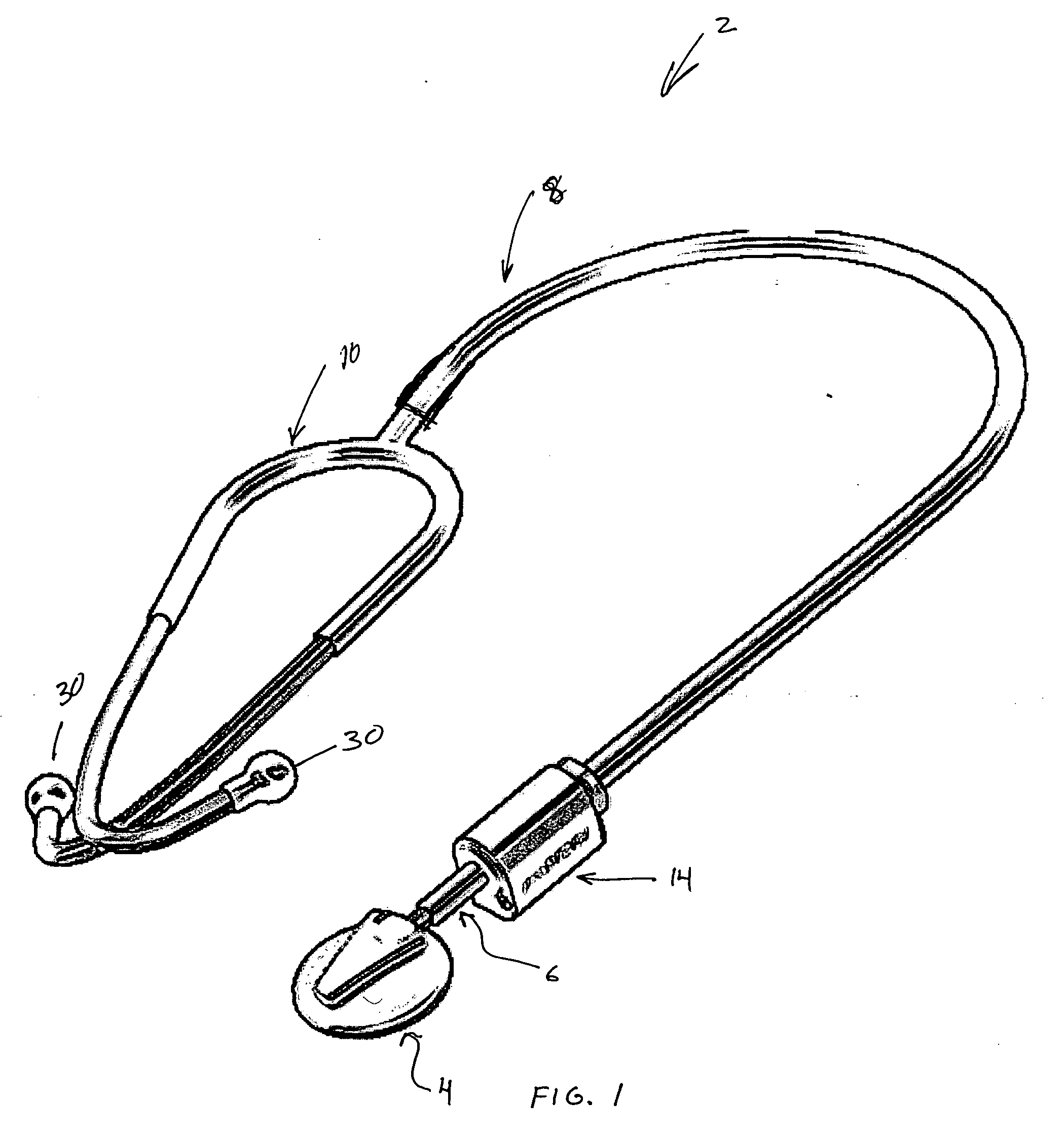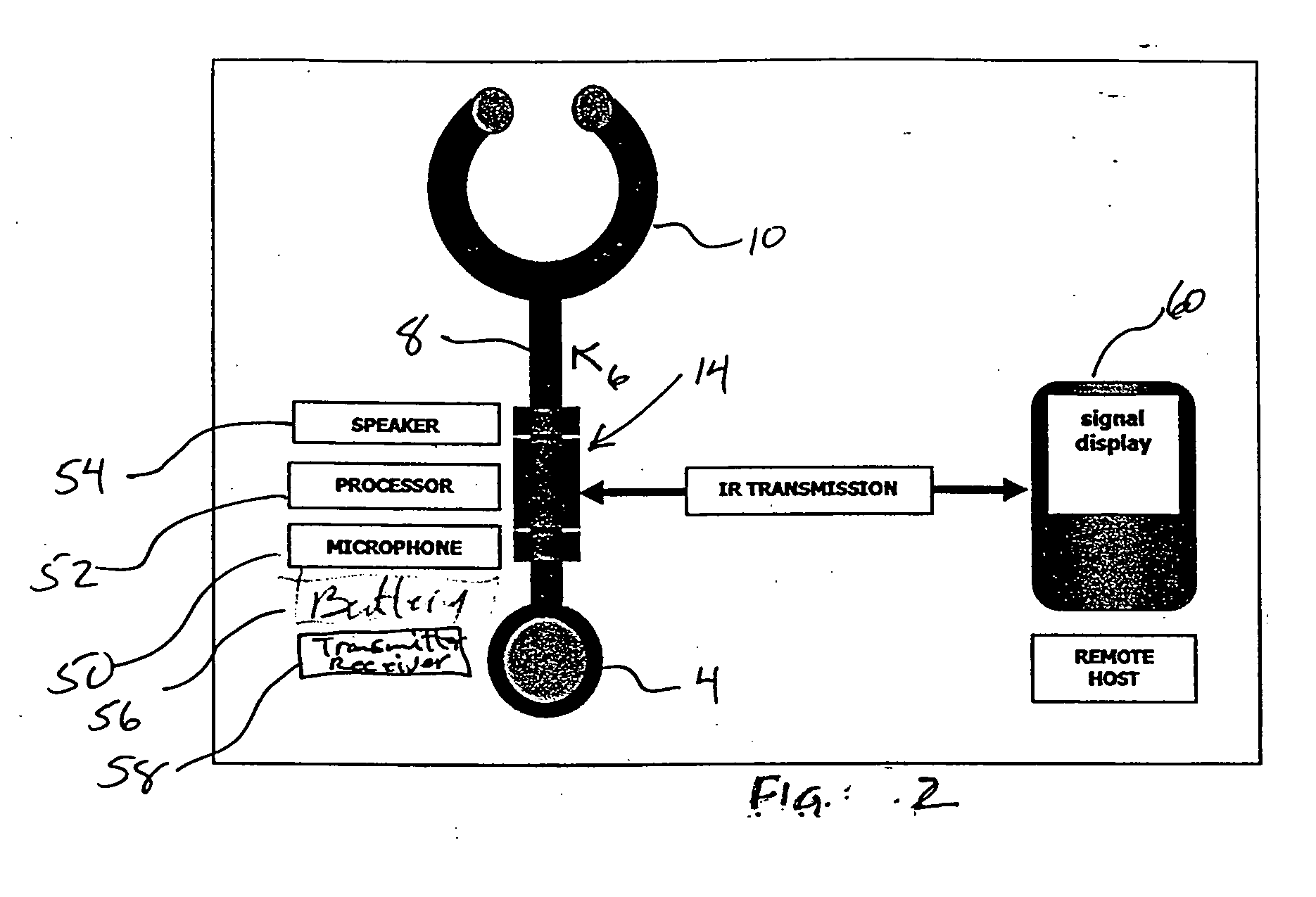Electronic adaption of acoustical stethoscope
a stethoscope and adapter technology, applied in the field of stethoscopes, can solve the problems of no filter or filter component designed or applied to suppress background noise, and the stethoscope also transmits background noise, so as to improve the sound interpretation
- Summary
- Abstract
- Description
- Claims
- Application Information
AI Technical Summary
Benefits of technology
Problems solved by technology
Method used
Image
Examples
Embodiment Construction
[0035] A conventional stethoscope 2 is shown in FIG. 1 where the adapter 14 has been inserted a short distance from the chestpiece 4 containing an acoustical transducer. The adapter 14 is connected to the chestpiece by short transition tube 6. The output of the adapter 6 is connected by the normal transmission tube 8 to the bifurcated earset 10. In this way, a conventional stethoscope has been adapted by means of inserting the adapter 14 between the chestpiece 4 and the tube transmission arrangement 8 and if desired the stethoscope can be returned its original configuration. Typically, the adapter 14 is provided with the short transmission tube 6 to allow connection to the chestpiece 4. Therefore the adapter can be removed and the transmission tube 8 reconnected to the chestpiece 4.
[0036] The modified stethoscope operates much in the manner of a conventional stethoscope however, the adapter 14 processes the acoustical signal received from the transducer 4 and provides a modified ac...
PUM
 Login to View More
Login to View More Abstract
Description
Claims
Application Information
 Login to View More
Login to View More - R&D
- Intellectual Property
- Life Sciences
- Materials
- Tech Scout
- Unparalleled Data Quality
- Higher Quality Content
- 60% Fewer Hallucinations
Browse by: Latest US Patents, China's latest patents, Technical Efficacy Thesaurus, Application Domain, Technology Topic, Popular Technical Reports.
© 2025 PatSnap. All rights reserved.Legal|Privacy policy|Modern Slavery Act Transparency Statement|Sitemap|About US| Contact US: help@patsnap.com



